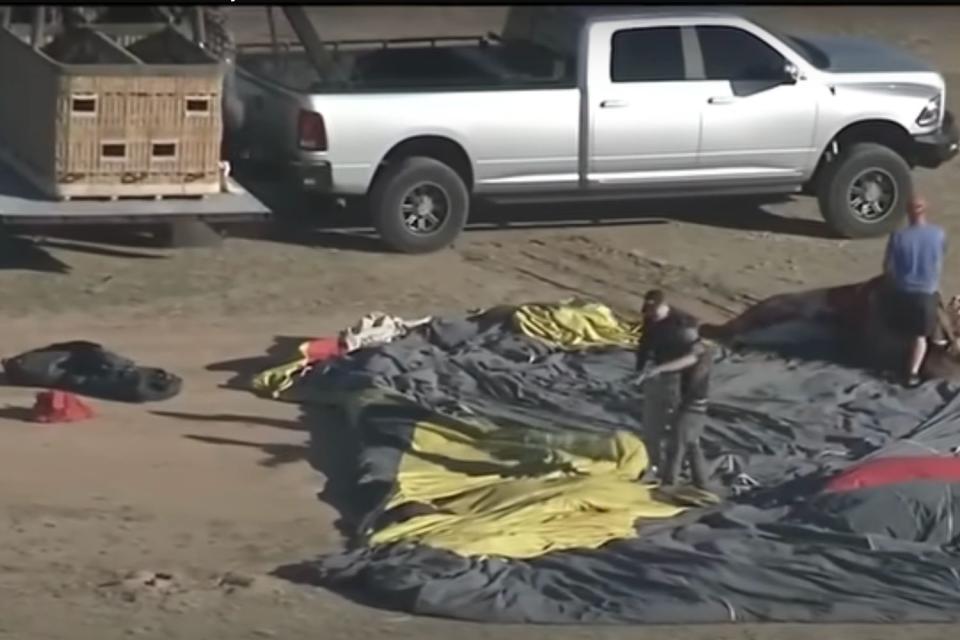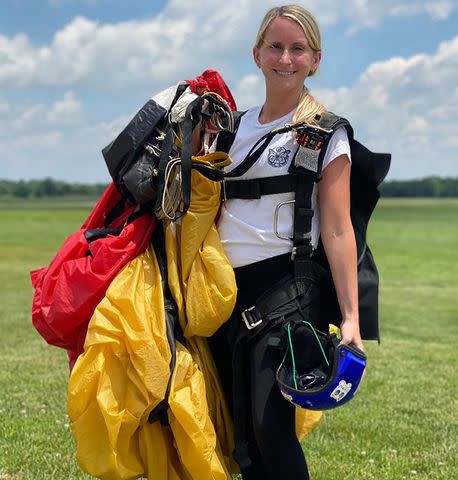Hot Air Balloon Pilot Had Ketamine in System at Time of Crash that Killed 4, Toxicology Reports Show
Four people, including pilot Cornelius Van Der Walt, 37, died when the hot air balloon crashed in the Arizona desert on Jan. 14

azfamily/YouTube
Hot air balloon crash on Jan. 14 in Eloy, Ariz.A hot air balloon pilot had elevated levels of ketamine in his system at the time of the crash that killed four people earlier this year in Arizona, according to toxicology reports obtained by multiple news outlets.
Cornelius Van Der Walt, 37, was piloting the Kubicek BB85Z balloon that was carrying 13 people, including eight skydivers who planned to jump from the aircraft, when it crashed on Jan. 14 in the desert near Eloy, Ariz., the National Transportation Safety Board (NTSB) said in a preliminary report released later that month.
“It is important to clarify that the skydiving was intentional and was successfully completed by all skydivers before any issues with the hot air balloon were evident,” Eloy police said in a statement at the time.
Related: Indiana Nurse Among 4 Dead After Arizona Hot Air Balloon Crash: 'She Was a Beautiful Person'
Van Der Walt — who is originally from Namibia — died in the crash along with Chayton Wiescholek, 28, of Union City, Mich.; Kaitlynn Bartrom, 28, of Andrews, Ind.; Atahan Kiliccote, 24, of Cupertino, Calif., PEOPLE previously reported, citing police. Additionally, a 23-year-old woman was critically injured.

This week, two toxicology panels conducted by the Federal Aviation Administration and NMS Labs revealed that Van Der Walt had "60 times the threshold" of ketamine content in his blood, according to Detroit Free Press, The Arizona Republic and 12 News.
According to the report cited by Detroit Free Press, Van der Walt was not prescribed ketamine and the substance was not utilized in resuscitation efforts at the crash site.
"In overdose, ketamine produces effects such as hallucinations, delirium, irrational behavior and vision and GI disturbances, progressing to cardiovascular and respiratory irregularities," the toxicology report states, per The Arizona Republic.
According to the outlet, an autopsy report determined that Van Der Walt’s death was caused by a variety of crash-related injuries, including several rib fractures, muscular injuries and a brain hemorrhage.
While the NTSB’s preliminary report released on Jan. 25 doesn’t share a cause for the crash, it states that the hot air balloon was “descending with a deflated envelope” before it hit the ground.
Want to keep up with the latest crime coverage? Sign up for PEOPLE's free True Crime newsletter for breaking crime news, ongoing trial coverage and details of intriguing unsolved cases.
"A review of multiple mobile phone videos revealed that the balloon was descending with a deflated envelope trailing from above,” the agency said. “Additionally, at times the burner flame under the envelope was observed.”
Related: Sole Survivor of Hot Air Balloon Crash Lost Brother to Murder 2 Years Ago
The NTSB further stated, “The accident site was flat desert terrain, sparsely populated with sage brush. The basket landed upright. The envelope remained attached to the basket and showed thermal damage near the mouth of the envelope. The sewn rim tape material near the top of the envelope was frayed, and several of the panels were damaged.”
According to the NTSB’s official website, investigations can take 12 to 24 months to complete.
For more People news, make sure to sign up for our newsletter!
Read the original article on People.

